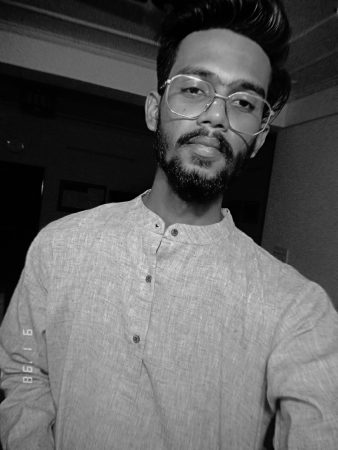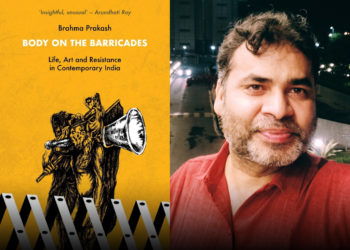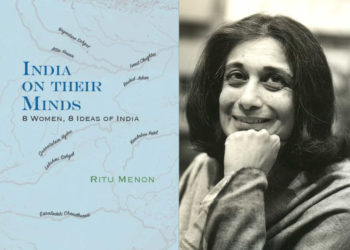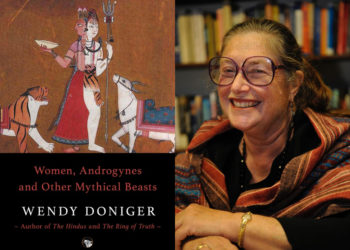The digital space is witnessing the creation of a new, shareable and performative language of protest. Over the years, social media has been used extensively to organise and demand action, and digital art seems to be providing this with a visual vocabulary. Technology that gets better and more sophisticated by the day has only helped to make this a more spontaneous way for protest artists. In India, protests against CAA-NRC-NPR triggered a sudden and fascinating rise in digital/graphic resistance artists, especially on Instagram. They’re fearless, and their art is hard-hitting and dynamic. As part of a new series, we spoke to a few of them to know what they thought of this emerging space.
In the first and second features feature, Mukulika R spoke to BakeryPrasad (Siddhesh Gautam) and Smish respectively. This time, it’s Rajdeep Atha (@rajdeepatha).

Mukulika R (MR): When did you first take to political art?
Rajdeep Atha (RA): I started making art way back in 2017, but it was not “political” per so or even illustrations. I started with photography, with a rather simple idea in mind — to tell stories. According to me, art is inherently political and the simple act of telling stories could be political too. I was at Jaipur working with an NGO in the slums of the city, when I started documenting the stories of the people there through my photos. I soon realised that it was a political act too. There were so many people and stories that it’s hard for me to pinpoint one, but yes, it happened in Jaipur, Rajasthan, in 2017.
I started doing illustrations just before the anti-CAA/NRC protests began. I do remember my first illustration. I was so enraged with what was happening across the country and it felt as though everyone was looking at others through a single lens, i.e, the lens of “religion”. This became an inspiration to counter that narrative.
View this post on Instagram
MR: Some digital illustrators have said that it is difficult to communicate complex emotions like pain, rage, suffering, trauma in a way that suits digital tastes. How do you handle such things?
RA: That’s true. Because of the minimised attention span, it is difficult to communicate several human emotions. However, I feel that there are two things that the internet easily understands — satire or mockery and anger or rage. I often find myself shuttling between these two emotions in my illustrations. I try to mix a bit of sarcasm and light humour.
MR: Does the fear of repression affect you?
View this post on Instagram
RA: Well, it definitely is scary to think of what the government is doing to the dissenters, but in no way am I scared. I don’t think about the consequences much. Fascist regimes throughout history have been afraid of art and artists, and that’s what our weapon should be. Art indeed is my weapon. I think, in no way should fear stop you, although it’s real. I don’t feel the fear because I’m still not that big to be recognised as a “threat” per say, perhaps, but yes.
MR: Does it get overwhelming?
RA: To be honest, yes. It does overwhelm me sometimes, but I’m quick to remind myself that I can’t force myself to be creative. I like creating when it comes to me naturally. There’s something in the news everyday, but I don’t like to jump onto everything.
MR: Have your roots and background influenced your work?
View this post on Instagram
RA: Yes and no. My grandfather is a Communist and we have had all sorts of Soviet propaganda magazines at our home from childhood. However, before 2014, I was a bhakt, and my father used to be critical of the right-wing. At the time, I simply couldn’t understand how he could be so critical even after having served in the army. Our dinner table conversations had a huge influence on me converted me, along with my father and his collection of books at our home.
MR: We’d love it if you could pick one image that you hold especially close to your heart from your entire repertoire and tell us why it is so.
RA: There are two illustrations that hold a lot of value to me. The first one is “Cool Propaganda Drink” — it’s a concept art that came to me one day as I was watching TV landed at Republic channel and found Arnab Goswami shouting as always. It’s important to me because as soon as I uploaded it, someone from the London Tate Modern Art Museum messaged me saying they wanted to feature in their “Protest Art Gallery” at Turbine Hall. That, I felt, was quite cool.
View this post on Instagram
The second one is one called “Crushing Dissent”. I love it because it captures the government’s actual motives in doing so. They literally are crushing dissent. And mainstream national media, of course, looks the other way.




